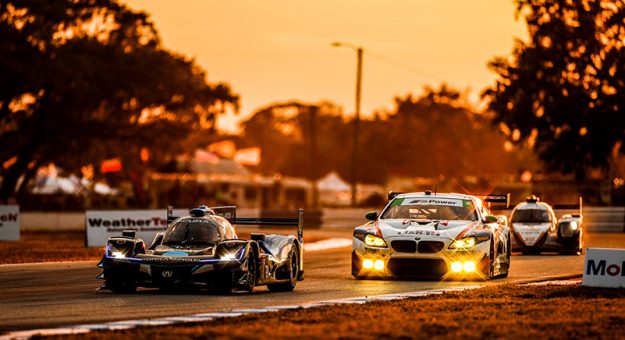IMSA’s Variety Conjures Memories from Days of Yore for IMSA.com Contributor
By David Phillips
DAYTONA BEACH, Fla. – For those who came of age watching the likes of Jim Clark, Dan Gurney, Mario Andretti and Richard Petty winning races from Spa to Le Mans, Indianapolis to Daytona, it’s easy to rue the state of auto racing circa 2021; to hearken back to a time when the month of May was genuinely a month’s worth of practice and qualifying, when finishing P20 or better in one of the Twin 125s to make the Daytona 500 starting field was a feat in itself; when the closest thing to a spec series developed “organically” when the Cosworth DFV powered all but a handful of Formula One cars; when the shape of a race car was dictated as much by aesthetics as aerodynamics, mechanical DNFs were common, blocking was unheard of and overtaking for position occurred with some regularity.
It’s also easy to look upon today’s spectacles where artificial measures like knockout qualifying, push-to-pass and drag reduction zones inject an element of unpredictability into an event (lest the entire proceeding be predetermined by computers and wind tunnels) and elicit a yearn for the good old days. Except in sports car racing.
To be sure, the IMSA WeatherTech SportsCar Championship and the FIA World Endurance Championship have moved on from the days when Aston Martin DBR1s, Ford GTs, Ferrari 512s and Porsche 917s ruled the proverbial roost. After all, the “Le Mans start” has been relegated to the dust bin and, of course, there’s no ignoring the 800-pound gorilla known as Balance of Performance (BoP) that would have been anathema to the likes of Enzo Ferrari, Carroll Shelby and Jim Hall.
But, once BoP has been applied, what the paying spectator sees is little changed from the days of Fangio, Moss and Phil Hill. And where sports car racing has changed, it has, arguably, changed for the better. After all, how many times have we heard the days of just surviving an endurance race are history; that today’s enduros are tantamount to sprint races, and the sprint races are veritable cage wrestling matches on wheels?
Certainly, the contemporary sports car racing “product” would be more recognizable to fans teleported from the ‘60s or ‘70s to 2021 than many other present-day branches of motorsport.
A sports car fan from long ago would still hear a cornucopia of engine sounds today, see both a variety of prototype shapes and GT cars resembling their counterparts on the showroom floor. Those transported fans could follow a race without an app delineating how much push-to-pass remained for each driver, or whether a car was close enough to the car ahead to engage the DRS. They could look forward to watching drivers well and truly jousting for position from start to finish.
To be sure – and to be applauded long and hard – all forms of racing are exponentially safer than in the days of Clark, Andretti, Gurney and King Richard. But when it comes to the on-track product, sports car racing is downright unique in that the changes it has undergone in the past half century are virtually all for the better – for the competitors and, most of all, the fans.
